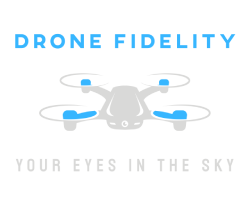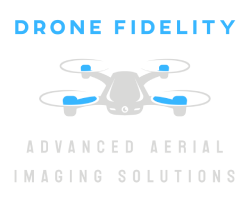Photogrammetry vs LiDAR | Aerial Mapping Explained
Photogrammetry and Light Detection and Ranging (LiDAR) are two proven methods to create maps, models, and measurements from the air. Both produce 2D and 3D outputs that support planning, inspection, and documentation. This article explains what photogrammetry is, how it works, where it shines, and how it differs from LiDAR so you can choose the right tool for your project.
Quick Background: Where Photogrammetry Originated
The core idea behind photogrammetry is much older than drones. Early versions emerged in the 19th century using balloons, kites, and later aircraft to capture overlapping photos. Surveyors used geometry to measure positions from multiple images. Today, the same principles power modern, software-driven 3D reconstruction from drone imagery.
- Origins: measurements from overlapping photos and known geometry
- Aerial era: fixed-wing aircraft and film cameras for mapping
- Digital shift: GPS/IMU, RTK, and powerful software unlock fast 2D/3D outputs
What Photogrammetry Is and How It Works
Photogrammetry turns many overlapping photos into a scaled 2D map or 3D model. Software identifies matching features between images (called tie points), estimates camera positions, and reconstructs surface geometry. With good flight planning and positioning, the results align to real-world coordinates.
- Capture: fly planned patterns with high frontlap and sidelap
- Tie points: software matches the same features across images
- Reconstruction: positions and surface are solved using image geometry
- Georeference: a combination of Real-Time Kinematic (RTK), Post-Processing Kinematic (PPK), and/or ground control points (GCPs) align outputs to a coordinate system
What Drives Accuracy
Accuracy depends on image scale, flight design, camera behavior, and how you anchor the project to the ground. Small choices in the field often have the biggest payoff in processing.
- GSD: lower ground sampling distance from safe, lower altitude yields finer detail
- Overlap: plan high frontlap and sidelap to stabilize the solution
- Camera: true or simulated global shutter reduces motion artifacts
- Stability: low wind and even lighting produce sharper, more uniform images
- RTK/PPK: improves camera positions for better absolute accuracy
- GCPs: surveyed targets further tighten alignment when high-accuracy, geo-referenced results are required
Typical Outputs
Most projects deliver both a visual layer for quick review and a heavier, measurement-ready file for analysis. Pick formats that fit your software stack and sharing needs.
- Orthomosaic: georeferenced, stitched top-down imagery
- DSM/DTM: digital surface and terrain models derived from imagery
- Point cloud and mesh: 3D reconstruction for visualization and measurement
- Contours and volumes: cut/fill and stockpile volumetric calculations
Common Use Cases and Industries
Teams choose photogrammetry when they need current site context, measurement, or visual records. It is widely used across public and private sectors.
- Construction: progress basemaps, logistics, and cut/fill checks
- Utilities: corridor checks and asset inventories
- Transportation: planning, grading review, and documentation
- Municipal: right-of-way mapping and facility records
- Land and canopy: site stewardship and change detection
- Heritage: structure models and condition records
Photogrammetry vs. LiDAR
Both methods produce georeferenced 3D data, but they sense the world in different ways. Photogrammetry is camera-based and excels at rich color and texture. LiDAR is an active laser measurement that can capture geometry even when surfaces lack texture or light.
- Sensor type: photogrammetry uses imagery; LiDAR uses laser range measurements
- Vegetation: LiDAR can record multiple returns through gaps in canopy; photogrammetry sees only what the camera can see
- Lighting: LiDAR does not depend on daylight; photogrammetry prefers even light
- Surface texture: LiDAR handles low-texture and reflective surfaces better
- Throughput: photogrammetry offers high visual detail at lower cost; LiDAR speeds up dense 3D capture where geometry is complex
- Deliverables: both produce point clouds and surfaces; photogrammetry adds photo-real textures and orthomosaics
Choosing Platforms and Payloads
Pick the aircraft and camera based on the job. For mapping accuracy, a mapping-grade camera and RTK/PPK are essential. For inspection and situational awareness, multi-sensor payloads add reach and thermal views.
- Matrice 4 class: multi-sensor platforms for inspection and public safety with zoom and thermal; pair with mapping-grade capture when accuracy is the priority
- Phantom 4 Pro class: legacy mapping workhorse with a mechanical shutter widely used for photogrammetry
- M30 series: built for inspection and response; excellent reach and sensing, while mapping accuracy depends on the use case and camera behavior
- RTK and control: add RTK/PPK and ground control points when the scope calls for tighter absolute accuracy
Note: some jurisdictions require a licensed surveyor for legal boundary surveys. Always align method and deliverables to the standards your project must meet.
When to Choose Which
If you need a photo-true basemap and a cost-effective 3D record, start with photogrammetry. If you need bare-earth terrain under canopy, low-texture geometry, or night capture, LiDAR may be the better option. Many teams use both.
- Choose photogrammetry for: orthomosaics, visual reports, site context, and volume checks
- Choose LiDAR for: terrain under trees, dense vegetation, and low-texture surfaces
- Combine both for: colorized point clouds, design review, and complex sites
Explore Aerial Mapping Methods in More Detail
Want a side-by-side plan for your site and timeline? We can outline a photogrammetry capture plan, walk through expected accuracy, and show how the outputs plug into your GIS or CAD tools. We can also advise where LiDAR might offer advantages depending on your project requirements.
DRONE FIDELITYTM is a Veteran-Owned Small Business (VOSB) and FAA-certified Drone Service Provider (DSP) that specializes in Advanced Aerial Imaging SolutionsTM. Based in Gaithersburg, MD and serving the greater Washington Metropolitan Area, we deliver high-accuracy inspections, measurement, mapping, and documentation for industry professionals.

